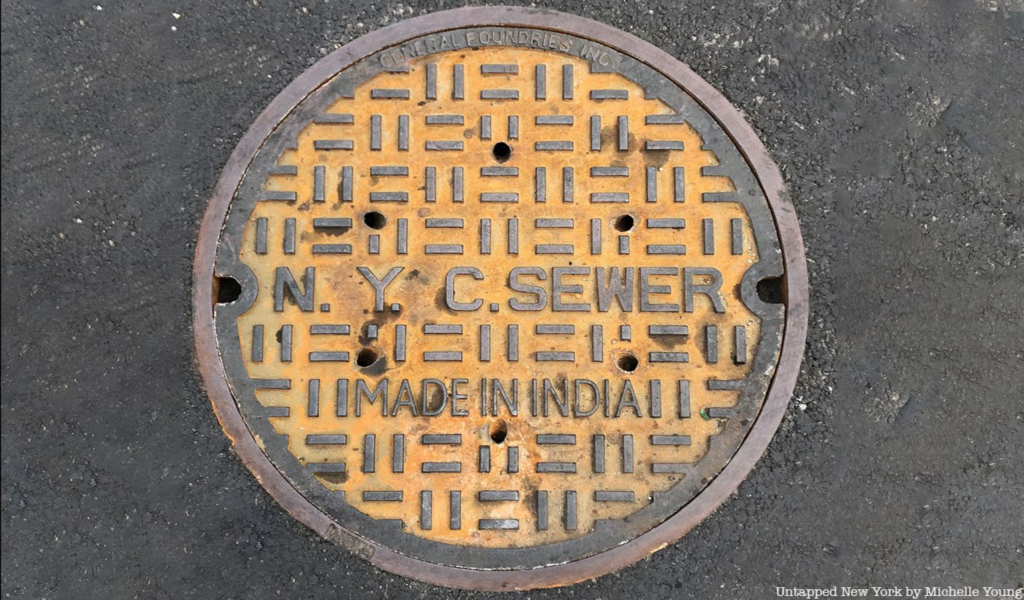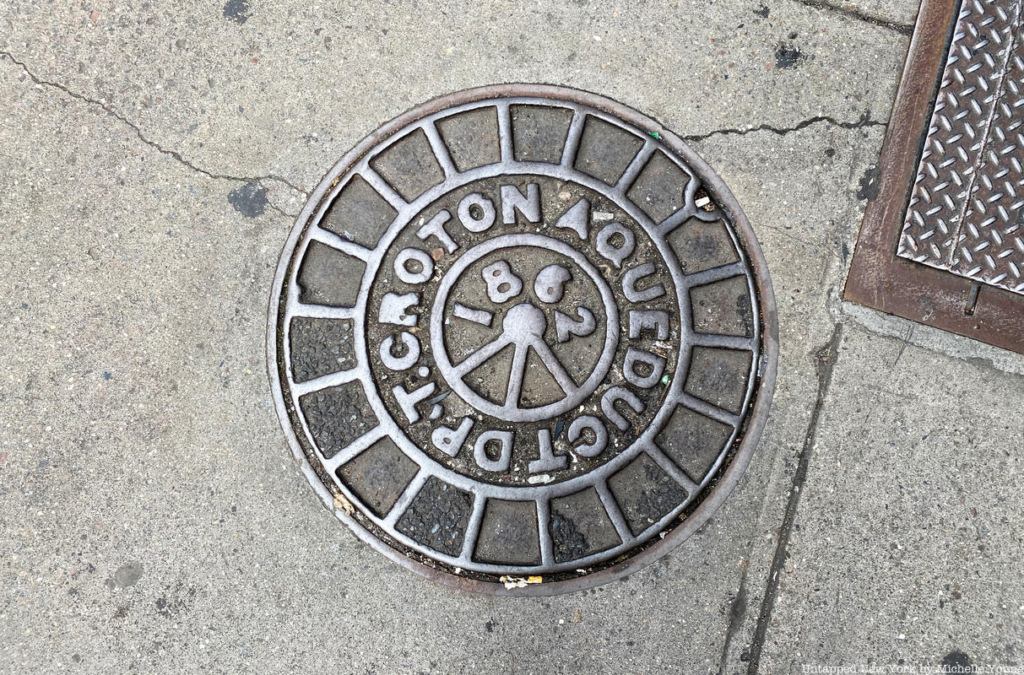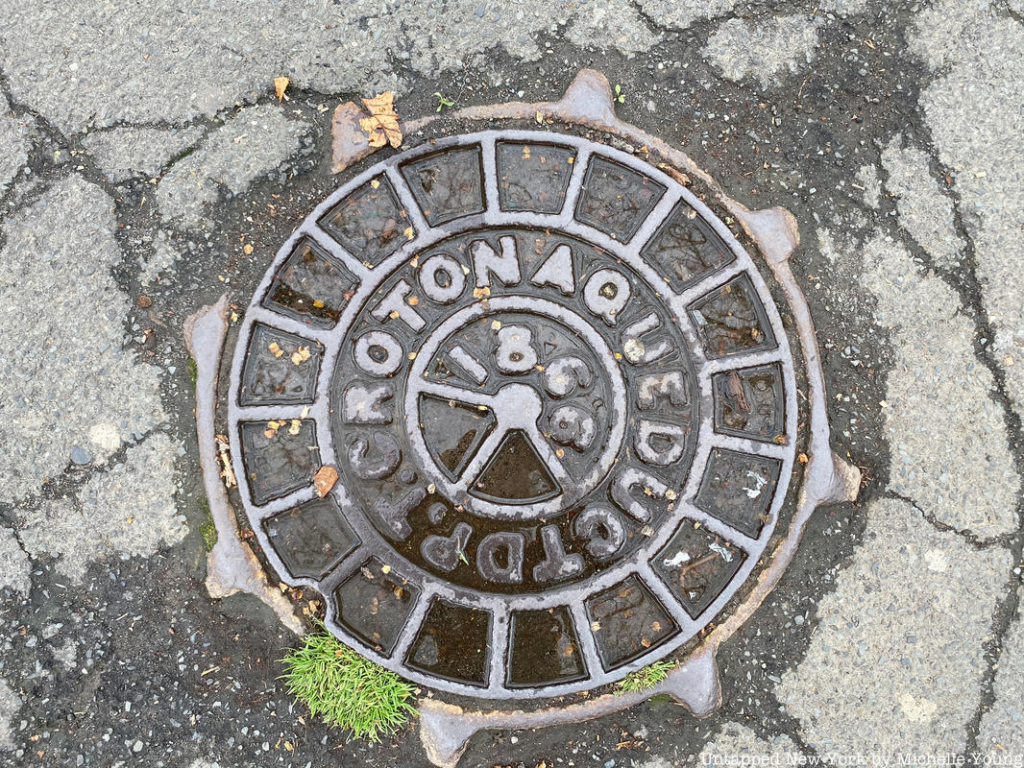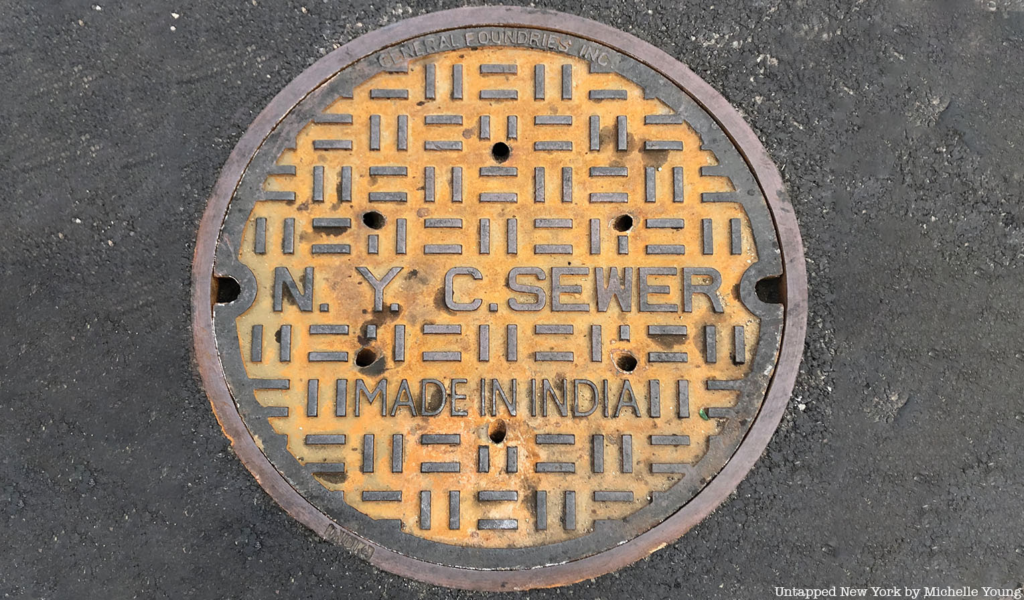Monday-Wednesday, July 29-31, 2024 – STEP ON HISTORY EVERY DAY



TAKE RED BUS TO OCTAGON STOP,
WALK NORTH ON WEST PROMENADE
TO COLER.
ENTRANCE IS JUST PAST MAIN ENTRANCE
AT THE COLER GARDEN.

NYC MANHOLE COVERS:
HISTORY AND HOW THEY’RE MADE
PART 2
MICHELLE YOUNG
UNTAPPED NEW YORK
ISSUE #1280
MONDAY-WEDNESDAY, JULY 29-31. 2024

So, for urgent public health reasons all around the world, sewage systems had to be developed and systems built to bring in clean water. This is how we get some of the oldest manhole covers left in New York City. In 1842, the first Croton Aqueduct was completed bringing fresh water down to the city from Westchester County by means of gravity. It was one of the largest engineering feats of the 19th century. The system opened to great fanfare with a celebration that included a parade down Broadway, the ringing of church bells and the shooting of canons. Gravity-powered fountains in City Hall Park and other places in Manhattan shot water 50 feet up into the air. Manhole covers were needed to access the new exciting system underground.
Tracking historical ephemera, like the oldest manhole covers, is one of my past times. For years, a Croton Aqueduct manhole cover on Jersey Street next to the Puck Building in Soho was often cited as the oldest manhole in New York City. It had the words “CROTON AQUEDUCT D.P.T. 1866” on it. Sadly, roadwork in 2017 wiped away its existence so you won’t find it there anymore. The quest then remained to find the next manhole cover that could be crowned the oldest

Turns out, another Croton Aqueduct manhole cover — even older than the Jersey Street one — had been here all along. Dating to 1862, as evidenced by the cast-iron numbers, this manhole cover is even better preserved because it sits on a sidewalk. It is however, located in a far less charming spot —across from the much-despised Port Authority Bus Terminal next to Times Square on 40th Street and 8th Avenue.
Another one from the same year was found in Central Park and then in 2021, reader Don Burmeister, who runs the site A Field Guide to New York City Manhole Covers, tipped us off to an even older one! Dating to 1861 and located in Central Park this manhole cover currently holds the title of New York City’s oldest in our book.


Turns out, another Croton Aqueduct manhole cover — even older than the Jersey Street one — had been here all along. Dating to 1862, as evidenced by the cast-iron numbers, this manhole cover is even better preserved because it sits on a sidewalk. It is however, located in a far less charming spot —across from the much-despised Port Authority Bus Terminal next to Times Square on 40th Street and 8th Avenue.
Another one from the same year was found in Central Park and then in 2021, reader Don Burmeister, who runs the site A Field Guide to New York City Manhole Covers, tipped us off to an even older one! Dating to 1861 and located in Central Park this manhole cover currently holds the title of New York City’s oldest in our book.

To learn more about manhole covers, I spoke with Lisa Frigand, who worked for ConEd for 34 years starting in 1978. She retired as the Manager of Cultural Affairs at ConEd in 2012 but is still involved in the arts, making her own ceramics and embroidery. She tells me that when she was working at ConEd, the company had about 250,000 manhole covers and that they weigh between 200 and 300 pounds each. A spokesman at ConEd confirmed her estimate, telling me that the company manages approximately 265,000 structures which include manholes, service boxes and transformer vaults. But then the NYC Department of Environmental Protection also gave me their numbers, and they have about 350,000 manhole covers across the five boroughs! So for now, I’m crowning the DEP with having the most number of manhole covers in the city!

A good number of manholes covers have the words MADE IN INDIA on them in large, all capital letters. Have you ever wondered why that is? To get down to the bottom of this, I spoke with Natasha Raheja, an anthropologist and professor at Cornell University and the director of the documentary Cast In India, which is an exploration into how manhole covers in New York City are made. Her quest to understand the connection to India took her to Howrah, a city in West Bengal, where some of the NYC Sewer manholes are being manufactured. In our latest podcast episode, Natasha explains what materials manhole covers are made from, how they’re manufactured, and some additional fun facts. You can watch Cast in India on Apple TV, Google Play, Kanopy, and Amazon Prime (in select countries).
Manhole covers are also made in the United States. ConEdison tells me that it gets most of its manhole covers from a foundry in Michigan called East Jordan, but they work with a few other US-based foundries as well.
New York City is a fountain of inspiration for artists. Even the most mundane of objects have been turned into art, and the manhole cover is no exception. In the year 2000, nineteen custom manhole covers appeared in Greenwich Village with a cryptic phrase on it: “In Direct Line with Another and the Next.” The words looked like they had been almost stamped onto a generic looking manhole cover. The letters were in all capitals, but everything was a little crooked. If you came across it, you might look around you for something it might reference, perhaps in direct line with it. But it wasn’t quite as direct as that.

On the rim of the manhole cover, you would see the names of three organizations involved: The Public Art Fund, Con Edison and Roman Stone Company. It was an art initiative from the Public Art Fund, a non-profit dedicated to putting art in public spaces. The design itself came from Bronx-born artist Lawrence Weiner, whose text-based art has been in museums and public spaces all around the world. He was one of the pioneering artists who began using language as art. New Yorkers may remember his more recent installation in 2009 on the piers of the Battery Maritime Building, where the ferries to Governors Island leave from. It read: “AT THE SAME MOMENT” in large red lettering.
Lisa Frigand, whom we spoke to earlier, was actually instrumental in getting Lawrence Wiener’s manhole cover project executed, when she was Manager of Cultural Affairs at ConEd. She worked with Roman Stone Company, a foundry on Long Island, to get the manhole covers designed to spec and made. I asked her what the phrase, “In Direct Line with Another and the Next” meant to her — and you can hear her answer in the podcast episode! You can find at least one of Weiner’s manhole covers remaining, as part of the Whitney Museum’s collection – it’s embedded in the floor near the entrance to the museum.
One of the most pressing questions I had about manholes is what it’s like to go down one. In 2009 I missed my own opportunity to do just that. Self-made urban archeologist and local icon, Bob Diamond, had discovered and excavated the famed Atlantic Avenue tunnel in Brooklyn and was giving tours. Built in 1844, it’s considered the world’s first underground transit tunnel. Chalk it up to being in my 20s and in a rock band at the time. I was out late performing and just couldn’t get up in time to go. I thought, I’ll be able to go again, but this is New York City and all off-limits things get shut down eventually. Fortunately for us, Justin Rivers did make it and you can hear all about his experience in the podcast episode.
Before we close out, have you figured out yet why are manhole covers round? My contact at the DEP says, “The principal reason that manhole covers are round is so they won’t fall into the manhole.” If a manhole is square, rectangular or even oval, it can fall into the manhole if you insert it at an angle or vertically. Yikes!
Over the last 160 years, New York City’s underground has become increasingly complex. We spoke today about the most common manhole covers you can find in the city, the NYC Sewer manhole covers and the ones for ConEd. But you’ll also find manhole covers for the subway, for the water system, and for telecommunication companies like Verizon and its subsidiaries, which include companies it acquired like the New York Telephone Company and Empire City Subway (ECS for short). Empire City Subway has nothing to do with the modern subway, but was formed after the Great Blizzard of 1888 which took down much of the city’s overhead electrical infrastructure. The aim of the company was to build underground ducts for telecommunication services.in.

When companies go defunct, sometimes their manholes covers remain for a long time afterwards, becoming part of the city’s historical record. While the number of manhole covers in New York City is a constantly fluctuating number, what’s clear is that they continue to be an object of fascination for New Yorkers. Look down next time you’re walking around and see what you discover about New York City’s history and how the city works. Cowabunga!
CREDITS:
UNTAPPED NEW YORK



Leave a comment